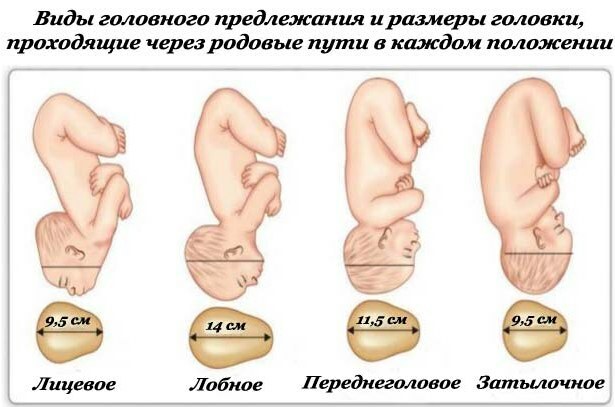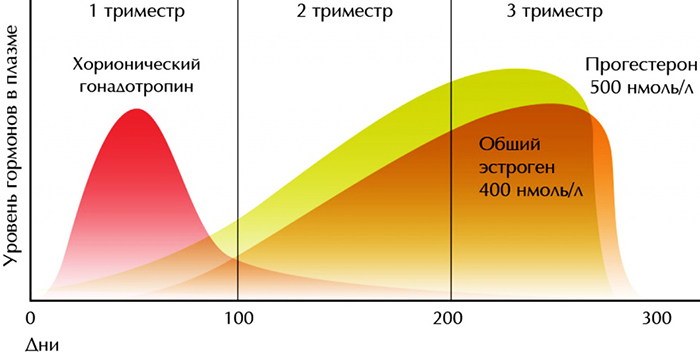placenta previa - dangerous for childbearing condition characterized by an atypical location and attachment of the placenta to the wall in the uterus: the lower parts of the body - in the neck of his chasti.opasno?
GENERAL INFORMATION
Normal place of location of the placenta is the area of the bottom and / or the body of the uterus, which are well supplied with blood. If the attachment of the placenta was lower (in the region of the lower segment), in which case it can partially or completely cover the inside of the cervix. Such a state is called previa.

The main danger with placenta previa is its abruptio by reducing the muscular wall of the uterus. Depending on the area of such detachment may be violated placental function, leading, e.g., to intrauterine fetal development or in hazardous life of the future mother bleeding.
This pathology is not as common and occurs in about 1% of pregnant women. This percentage has recently tended to increase. Growing incidence of this pathology associated gynecologists with plenty
induced abortion and surgical procedures conducted on the reproductive organs of women.CAUSES
Etiological factors that may affect the accuracy of placental locations have not been studied until the end. Modern data allow us to distinguish 2 groups of causes of diseases that depend on:
- the condition of pregnant women;
- the characteristics of the fetal development.
The first group is a pathology that changes the morphological characteristics of the endometrium.
These states include:
- chronic inflammatory diseases of the uterus;
- proliferation of connective tissue in the endometrium after traumatic exposure (abortion, surgery);
- Cancer of the uterus pathology;
- congenital defects of the genital organs of women;
- multiple births.
Repeated pregnancy increases the likelihood of the development of this pathological condition. The special features of the fetus include violation of enzymatic processes in the fertilized ovum. In this case it is not implanted in a physiological location, and significantly lower.
CLASSIFICATION
2 degrees isolated placental location disorders:
- full presentation - fetal body is localized in the internal os of the uterus area. When carrying out a vaginal examination palpable exceptionally mild placental tissue.
- partial previa characterized by the partial overlap of the internal os uteri. Vaginal examination can detect not only the tissue of the placenta, but also the fruit shell.
Disclosure of uterine throat to determine:
- low attachment of the embryonic body, wherein the lower edge of the placenta is 7 cm below the internal os;
- cervical localization characterized by growing placenta into the cervical canal.
SYMPTOMS
The main manifestation of this condition is bleeding, which is very concerned about the woman. This is due to placental abruption due to insufficient stretching cervical card body during the growth of the fetus.

Bleeding is characterized by:
- the sudden appearance;
- constant relapses;
- absence of pain;
- stalling.
Bleeding appear to 22-24 weeks and can continue with varying intensity until the expiry of carrying a child. Gynecologists say: the duration and severity of bleeding affects the place of attachment of the placental membranes. Most dangerously low attachment.
Clinical signs of complete placenta previa:
- force blood loss can range from insignificant to abundant;
- the severity of bleeding increases with gestational age of the fetus and the child's growth and its maximum occurs in the prenatal period;
- perhaps only the first occurrence of bleeding during the onset of labor.
Partial previa is often accompanied by the following symptoms:
- bleeding after the disclosure cervical os;
- loss of blood, which can stop the dissection of fetal bladder and pressing exfoliated part of placenta fetus.
Low placental localization is usually accompanied by bleeding of low intensity. This condition is sometimes diagnosed after further evaluation. The second characteristic symptom that accompanies this dangerous condition - fetal hypoxia. oxygen deficiency occurs due to violation of the uteroplacental circulation. The main symptom of hypoxia is a disruption of the heart muscle kid.
Diagnose fetal hypoxic changes, you can:

- Listening to the heart's activity with a stethoscope. When this estimated rhythm of heartbeats, the frequency and sonority, the presence of extraneous noise. This is the easiest method, but it has its drawbacks. There is a possibility of error in calculating the number of heart contractions, especially during labor.
- For an accurate assessment of the fetal heart is widely used CTG. The action of this device is based on the ultrasonic effect, allows you to register all the heart muscle. Observing the dynamics capable show periods of increased frequency of or deceleration pulse. Movement toddler or increased uterine tone normally need to increase the heart rate.
- Doppler able to identify impaired blood flow in vessels of the uterus or the placenta. Data analysis to determine the degree of presumptive fetal hypoxia.
DIAGNOSTICS
For the correct diagnosis is necessary to:
- analyze medical history. Suspicion of a possible placenta previa can cause chronic pathology of the uterus, abortion, various surgical procedures.
- Specify the time of occurrence of bleeding.
- Spend gynecological examination through special mirrors to eliminate the visible cancer pathology, traumas, erosions. Vaginal examination must be done carefully so as not to increase bleeding. Such manipulation is carried out exclusively in the gynecological hospitals operating with the preparation for a possible emergency delivery. Complete placenta previa tactilely palpable in all the vaginal vault. Partial previa - one. The first stage of labor is characterized by a decrease in the tone of the cervical muscles, which improves the quality of diagnosis. If the space around the internal os palpable placental tissue - This indicates a complete previa. Palpation in this case may trigger increased bleeding. In addition to incomplete cephalic soft tissue determined embryonic body shell membranes.
- To examine pregnancies through ultrasound. This manipulation makes it possible not only to determine the location of the placenta, but also to monitor the progression of its detachment.
- Perform diagnostic procedures to determine the functional usefulness of the heart and blood vessels of the child.
Placenta previa is often accompanied by improper location of the fetus. Due to violations of receipt mother of arterial blood to the placenta, the baby often nedonoshen. A pregnant observed weak labor.
Complications postpartum period:
- thromboembolism;
- atonic hemorrhage;
- the development of an infectious disease.
TREATMENT
On the volume of treatment for abnormal position of the placenta affect the performance of hemoglobin and a profusion of blood loss.
There are 2 approaches:
- conservative;
- operational.
The task of the first approach - to provide childbearing until 37-38 weeks, when all its organs and systems are functionally ready for independent living.
Facilities for medical treatment in a hospital:
- bleeding during pregnancy less than 250 ml;
- It is normal pregnant;
- the lack of labor;
- physiological blood pressure numbers.
In the hospital for pregnant women with placenta previa is important to ensure:

- strict physical activity limitation;
- nutrition;
- antispasmodics reception and tocolytic drugs that prevent increased muscle tone of the uterus;
- correction of anemia by iron preparations;
- maturation of fetal lung tissue;
- blood circulation and metabolism in the mother-child system.
Caesarean section is performed on a planned or emergency indications.
Indications for urgent surgery:
- if there are recurrent bleeding;
- arterial hypotension below critical numbers;
- the inability of the fetus to pass in the pelvic area in the case of total placenta previa.
In addition to cesarean section, with partial overlapping of the uterine cervix by the placenta can be carried out amniotomy - dissection membranes.
Carrying out any rodorazreshayuschey procedure must be combined with the use of hemostatic drugs elimination posthemorrhagic anemia (Blood transfusions or components thereof, blood substitutes), medication increased labor, oxygen therapy, stabilization of blood pressure women.
COMPLICATIONS
Improper localization of the placenta facing the following complications:

- profuse blood loss with the development of anemia;
- delayed development of the child;
- high probability of an incorrect position of the fetus;
- placenta accreta, which can be a factor for radical removal of the uterus;
- fetal hypoxia due to violation of utero-placental circulation.
- treatment of inflammatory diseases of the female reproductive organs.
PREVENTION
Basic preventive measures in pathology:
- Early diagnosis of the state;
- full and adequate health care;
- preventing the development of anemia due to heavy bleeding;
- educational work on complications after abortion;
- treatment of inflammatory diseases of the female reproductive organs.
FORECAST
Placenta previa is the biggest threat to the future health of the mother and baby, and the prognosis is always serious. Massive bleeding significantly impair the flow of gestation period. Statistical data show that in this case the increased threat of death, both for the mother and for the baby, and may reach 5%. Caesarean section is the optimal one for delivery.
Found a bug? Select it and press Ctrl + Enter



